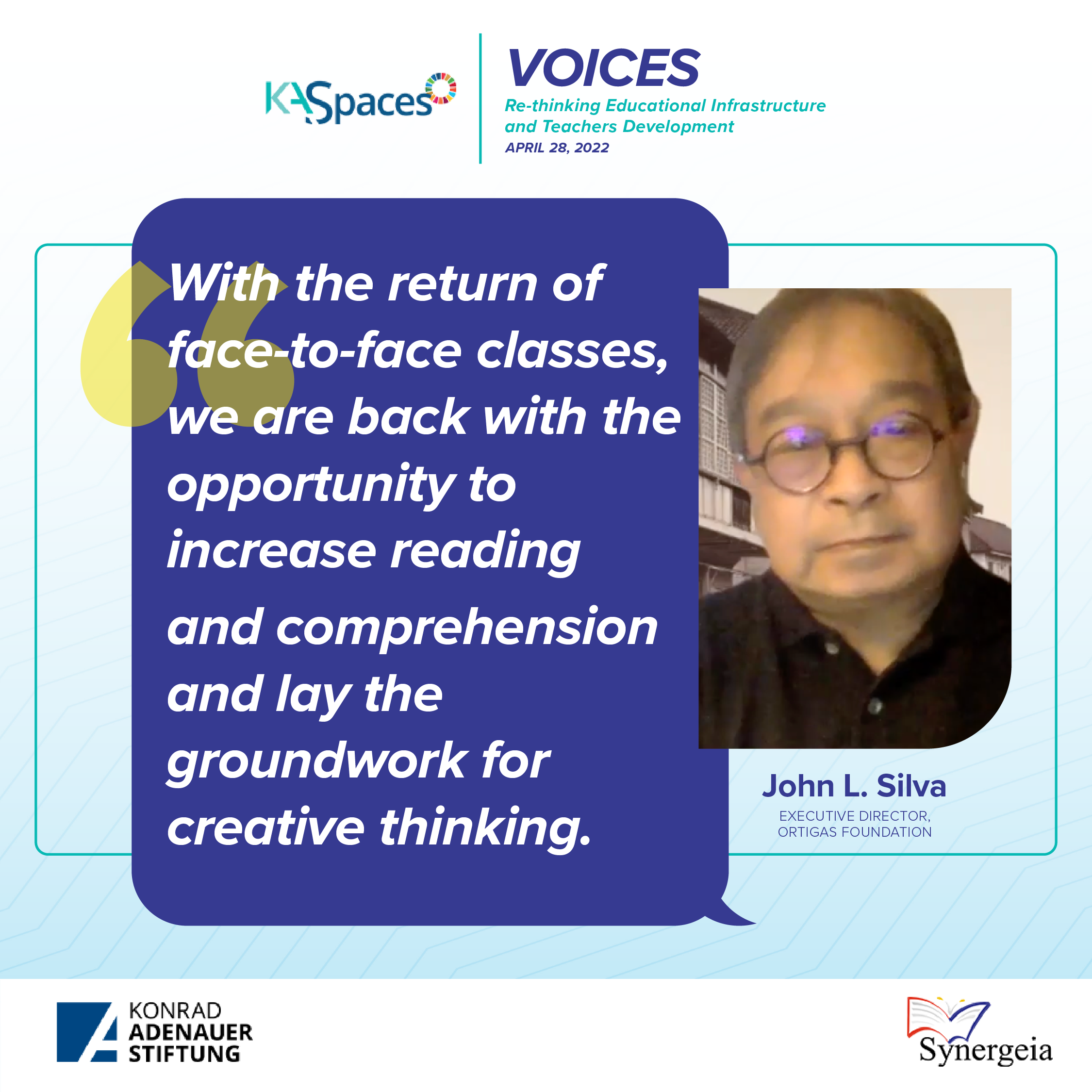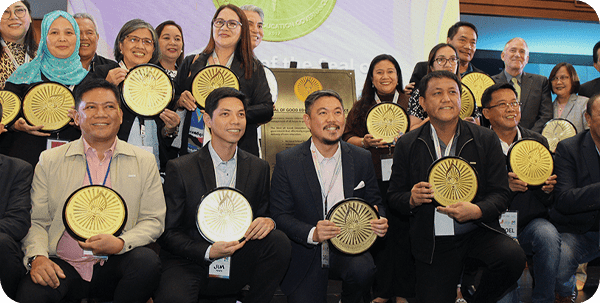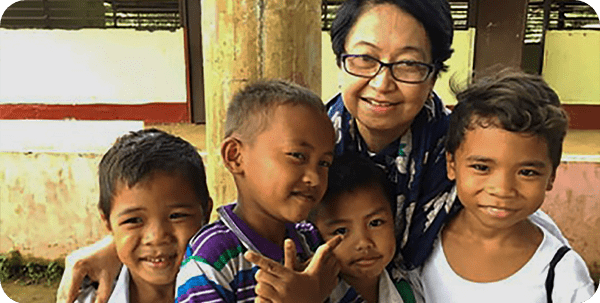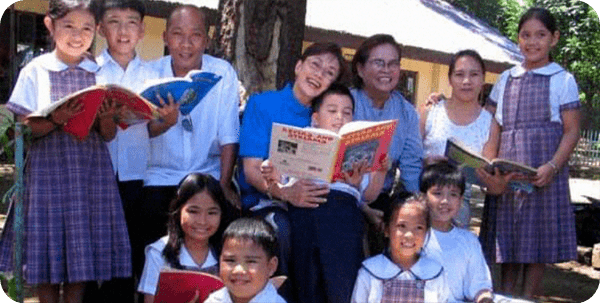Tag: #synergeia
“Teaching Creative and Critical Thinking”

KASpaces: Rethinking Educational Infrastructure and Teacher Development
April 28, 2022
Oftentimes in educational conferences in the Philippines and abroad, I am drawn to discussions on inventive ways to get students to learn; how to make them think creatively, how to develop inquiry in their minds, and develop opinions, critiques, and a highly developed appreciation of the things around them, instead of just pushing the “Like” button.
For over half a century, I have taught and lectured teachers and students and, more recently, under the auspices of our educational organization, Synergeia. Every time I am in front of an audience, I test reactions to what I say or project onscreen. I look for what engages an audience, what makes them linger in my phrases, what makes an impact in the way I juxtapose sentences or pause for effect.
Teaching creativity in the advanced world oftentimes means having each student or teacher in front of a computer screen learning the most creative app with often colorful and cheerful greetings. Oftentimes, the presentation is fast-clipped, reflective of the fast pacing of their society. It is assumed that each participant has a level of technical savvy to be at a screen not aided and can fix any glitch when it happens. Any teacher will be enthused to add to one’s teaching arsenal how to get students to be engaged.
But I come from the Philippines and poverty rears its obstructive head at any attempt to improve creative learning. For example, in a recent Zoom class that I had with a class on improving English grammar about 100 kilometers north of Manila, where I am, the class has selected students who showed high interest in the selected subjects and had access or ownership to a cell phone, which would be their video screens for the next hour. That lessened the class to half, or a total of 20 students. The attendance number would later decline throughout the hour. There were brownouts, or electric stoppage, which cancelled the participation of four or five students Then there was the matter of weak signals. Students connected intermittently and when they decided to find a steady signal, they resorted to climb a tree or run up the side of a mountain to secure a signal. When, finally, the remainder of the students made it so far, connected, there were issues of self-confidence and inability to speak with confidence. They needed goading and eventually responded and interacted. But that was only with 15 minutes left. Clearly, any sort of modern act of inclusion in creative teaching will hardly work in the Philippine setting. Let me therefore share with you what I do in an underdeveloped country without the accoutrements of creating the impossible.
First, I welcome the return of face-to-face teaching. I welcome that because of the very faulty Zoom teaching and the failed modules that were distributed throughout the country, in lieu of a teacher’s absence.
Next, I welcome the return of teachers renewing basic reading lessons The pandemic has significantly decreased the reading and comprehension skills of students. If the national scores before the pandemic showed students behind, it has been exacerbated by the pandemic and the accompanying school disruption. With the return of face-to-face classes, we are back with the opportunity to increase reading and comprehension and, in like manner, lay the groundwork for creative thinking. I will share with you some low-tech but effective teaching methods that I’ve used to spawn creative thinking and inquiry. These methods include using visuals employing storytelling establish a reading mandate, accessibility to libraries, proving art materials, and visiting museums. I
In the area of visuals in a few weeks I will have an exhibition of my organization’s library, the Ortigas Library, an exhibition of 100 vintage photographs of the tribal people of the Mountain Province in the North. It will be in a high school in a small town known for having graduated high achieving students. The principal welcomed the exhibition, stating that test scores of her students have plummeted again due to the pandemic, and she needed another way to reach the students who have been without a schooling discipline and schedule. She believes the never-seen photographs of the students’ ancestors in their native dress, events, and local architecture that they no longer see will be a revelation to their identity and ignite a learning moment.
Storytelling. Teachers have been taught to develop an authoritarian reserve in their teaching. That, to me, is a prescription to failure. I have been successful communicating to students when I relate a personal story or insight. Personal storytelling decreases the unequal relationship between students and teachers, an informal manner of relating events and people, especially if they mirror the experiences of the students, are the wedges to securing access to the student’s mind.
A reading mandate. To be creative and to have an opinion means to have read much to reach such a level. Reading and the corresponding comprehension scores in the country are abysmal. If in the past, the level of television watching exceeded study and school time hours, now there is additional video gaming and mindless watching that wipes out the hours for potential reading.
I have been quite strict on a reading mandate. Whenever I go around the provinces, I just impose. I just tell the teachers there shall be no video and TV watching for the whole school week and watching is only allowed on weekends after homework is completed and for a few hours. My Draconian law is hard to implement, given the supervision parents and teachers have to do. But what has to be impressed is there must be reading time for at least a half hour each day. A book to read and later to report are also compulsory. Reading regains the flow of time in imbibing words in sentence and paragraph constructions, and, most importantly, in understanding the import of the author’s overall message. Reading has no abrupt ending like TikTok, as it leads a reader through stories that may have taken several days to finish reading. A student’s mind is rewired from the immediacy offered by video to a steady, more realistic pace of digesting the written text and making sense of it. Likewise, with TV’s dulling powers, reading has an engaging quality, raising questions and even greater thought and rumination on the matter.
Access to libraries. Libraries are under-utilized in my country. There are city and school libraries that are mostly free to enter and use. There are a fair number of libraries throughout the country and, unfortunately, much of the reading fare in them are dated. Nonetheless, there are good reading books still and there are current newspapers and magazines to read. Students must be acquainted with libraries as a place for reading and as a place for solace. In recent times, libraries, like the Ortigas Library, which I work in, have been visited to borrow books and documents that straighten and clarify the flurry of false news now besetting us.
Access to museums. The treasures in museums are undoubtedly a way to stimulate creative and critical thinking. Not all student visitors get that experience. The ways of a child’s socialization at home or at school affect the way stimuli is received as in a visit to a museum. A visit, nonetheless, is a departure from a normal day, allowing students to gaze at master artworks or ancient artifacts, spurring thought to wander and reflect. The mind is most supple to receiving wider dimensions of creative and critical thinking in a museum setting.
Lastly, access to art supplies. Art therapy has been used successfully in drawing and drawing out emotional expressions in children affected by external factors, such as war. So it is to devote time in school or at home sharing coloring pencils, paint brushes, and paper. This is a new world of communication for the student other than the written text. It stimulates students and, for some, it may lead a path to an artistic streak or vocation in the future.
For underdeveloped countries like the Philippines with a failed educational system, these low-tech methods of developing creative and critical thinking still manage to stimulate students in that direction
Lastly, the steep learning decline in students…. distributing modules in lieu of teachers’ absence, the faulty learning through cell phones and screens affected by no signals or weak signals have been a severe setback for education in the Philippines. We are ever more aware now that face-to-face teaching led by a well-trained dedicated corps of teachers and, mind you, parents, are the only and most effective way to spark the genius inherent in each student.
John Silva
Executive Director, Ortigas Foundation
KaPEACEtahan KABATAAN

“YOUTH on PEACE and ARTS FESTIVAL”
Violent extremism, among the youth of today, concerned most of the society in all parts of the world. Some Muslim youth, due to lack of opportunity, gradually resulted in such options. In the context of Sulu where its residents had been at war for almost a decade, people long for peace and stability in their native land, and placed high hopes to the youth of Sulu, believing that one day, with these youth, they can overcome this challenge as they bring pride to their fatherland.
Thus, Synergiea in collaboration with the Jolo Municipality Women’s Council (JMWC), the Local Yourh Development Office and Sanguniang Kabataan ng Jolo organized KaPEACEtahan KABATAAN “YOUTH on PEACE and ARTS FESTIVAL” that aims to help build peace together with the youth from the different barangays in Jolo. These organizations had long been very supportive to such agenda such that they organized a festival that shall enhance the youth in building their potentials in arts by showcasing their talents in singing, dancing, acting and poster painting which were witnessed by different barangay representatives such as SK officers, parents and guardians, LGU’s, Barangay officials, some students, and other stakeholders in the community.
Further, the event is to achieve the following objectives:
- To enlighten the youth and to use their skills on arts to raise awareness on acts of violent extremism.
- To capacitate the SK and other youth organizations through arts, with the participation of the community stakeholders to eradicate the influence of violent extremism among young children.
- To showcase the talent on Arts among Tausug youth.
Starting with preliminaries such as registration spearheaded by secretariat from Jolo Municipality’s Women Council , and a prayer led by Mr. Ruhoddin S. Saabdulla, Jolo Tourism Officer II; the Singing of the Philippine National Anthem, the event emceed by Mr. Nash Abduhadi, commenced.
Afterwards, a Welcome Message delivered by Hja. Nur-Rayhan Alfad Tan, RN, President of the JMWC was delivered. She thanked everyone in presence especially Synergeia for spearheading such momentous event and a big opportunity for the talented youth of Sulu. As the head of Jolo Municipality’s Women Council, she encouraged everyone to believe that “men or women, young or old, everybody has a part to play and has a role to fulfill. Only by being given the opportunity, one can shine.” Her words had truly inspired the audience.
Afterwards, Mr. Elsimir Tawasil, the program officer of Synergeia read the objectives for today’s festival and introduced the other speakers for this event, Mr. Edsir A. Tan II, Councilor and also member of the committee on Peace; and Hon. Kerkhar S. Tan, Mayor of Sulu. All of them inspired the audience especially the youth attendees by emphasizing on the significance of their role in the society.
Hon. Kerkhar S. Tan couldn’t help himself but mention numerous times how big the contribution of the youth is in PVE. According to him, “It takes a village to raise a child. So we must take care of that village.” He emphasized that by looking out for the society, we also look out for our children.
To entertain all the participants, an intermission number was presented by Jolo Tausug Artist followed by the presentation of Jolo youth artists’ masterpieces from Barangay Alat, Asturias, Bus-Bus, Chinese Pier in a form of Canvas painting.
Not only youth from Barangay Chinese Pier showcased their talent in painting but also in bodily-kinesthetic aspect when the Barangay Chinese Pier Youth, whom are also KKDAT-Regional Chamipon for Interpretative Dance, performed an astounding and applauded dance. Thereafter, youth artists’ from Barangay Sanraymundo, Takut-Takut, Tulay and Walled City presented their masterpiesces Pier in a form of Canvas painting as well.
These are the masterpieces presented along with a brief interpretation provided by the artists during the activity:







These masterpieces were judged with a criteria read by Mr. Elsimir Tawasil. The winners were announced by the chairman of the Board of Judges. They are the following along with their prizes. Everybody felt like winners as a consolation prize of 2,000 pesos was given.
1st prize (10,000 pesos) – Barangay Tulay
2nd prize (7,000 pesos) – Barangay Bus-Bus
3rd prize (5,000 pesos) – Barangay Chinese Pier
The activity ended with a closing remarks delivered by Hon. Farrenz A. Tan, SK Federation President who pledged to take their part in Preventing Violent Extremism. They promised to be an example and a model to the youth by being kind, honest, respectful, and all the values a Tausug youth can ever possess. They also would like to finish their studies to be an asset in their family, in their community and moreover, to Lupah Sug. After his speech, there was a photo opportunity for everyone.
The said activity was highly praised by SK-Sanggunian Kabataan and other youth groups which they concluded that the youth of Sulu should be proud of their heritages in Arts and Culture that once flourished during its time as a Sultanate and Kingdom. With the huge support from JMWC and BLGU representatives whom helped organize and arrange the activity, the activity was indeed an over-all a success.



